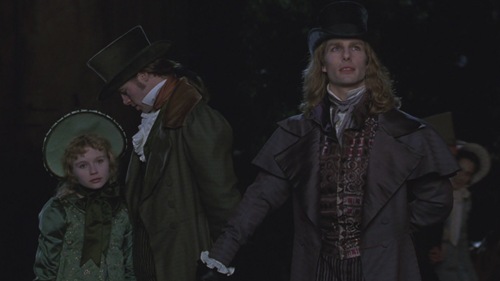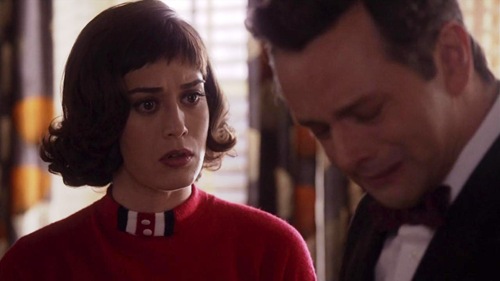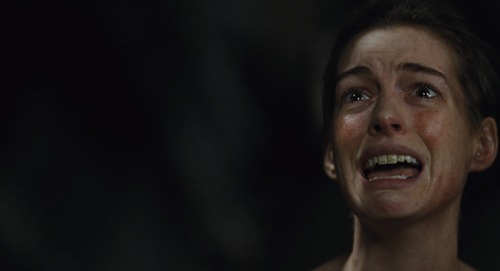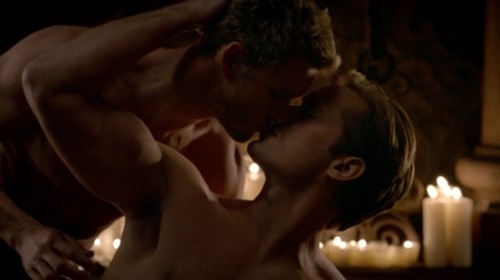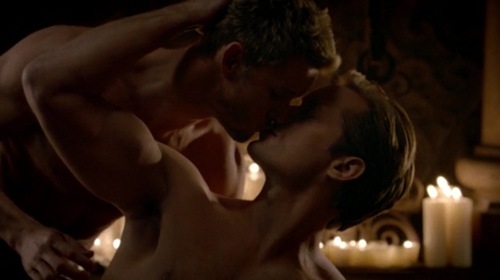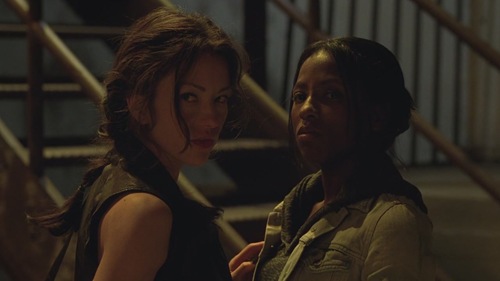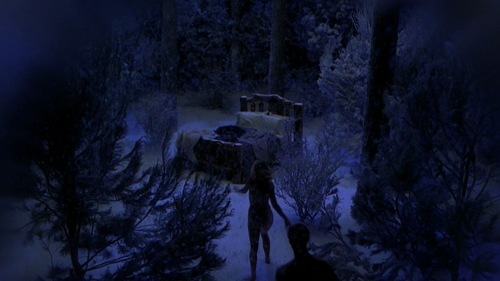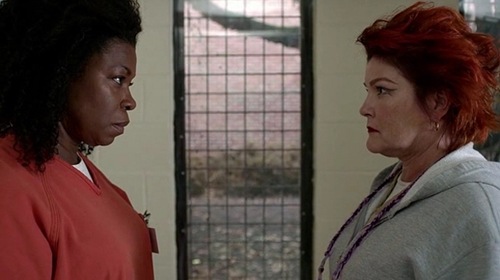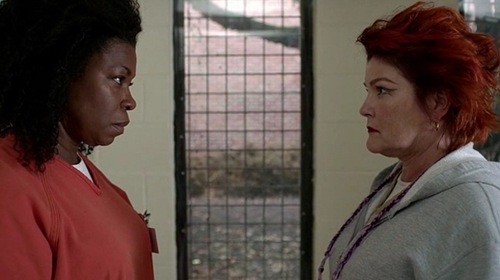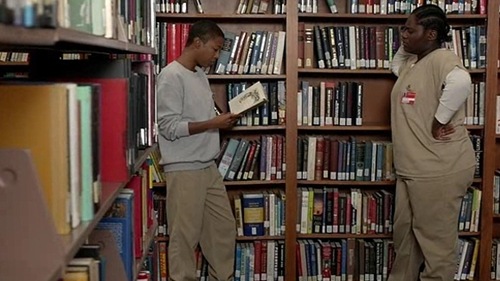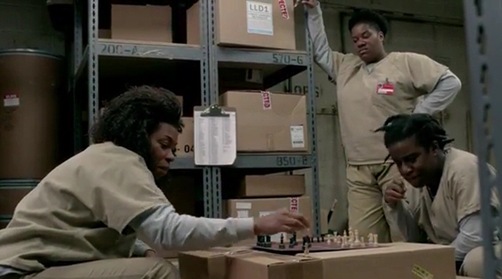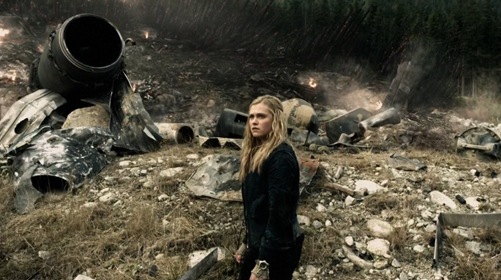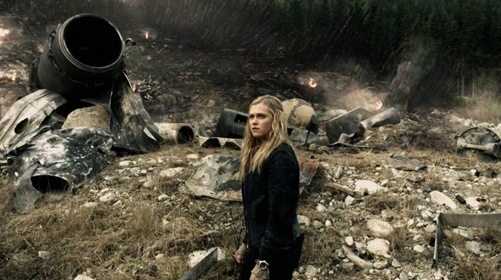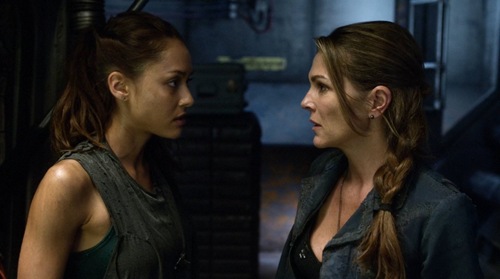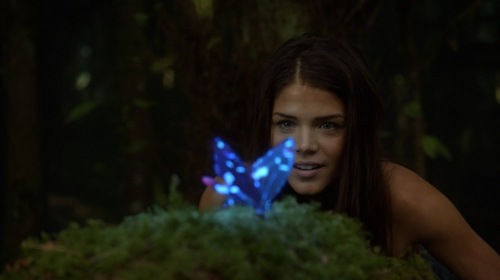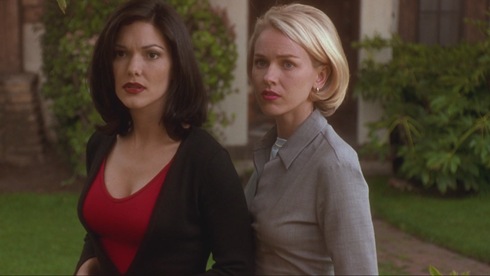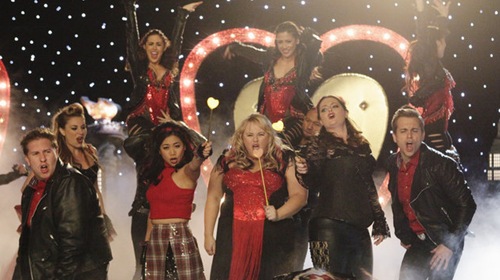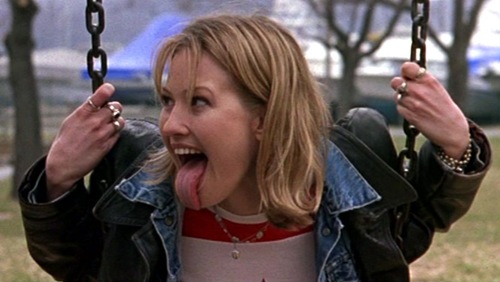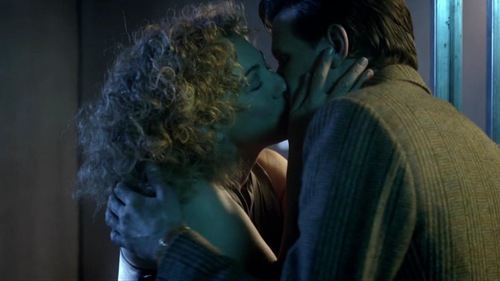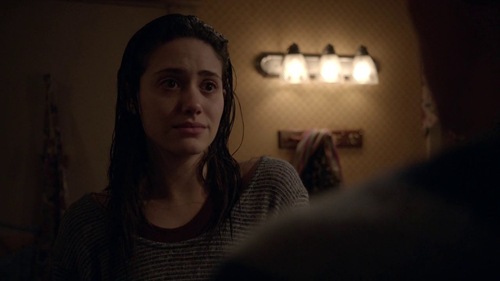Written by Katherine Murray.
Neil Jordan is best known for The Crying Game —aka The Movie Where It Suddenly Turns Out That the Main Character is in Love with a Trans Woman – but he also made two vampire movies, and damn if those weren’t kind of interesting, too. Taken together, they show that the vampire genre can be re-invented in all kinds of ways, as long as there’s substance under the biting and blood.

Let’s start with the obvious one. Interview with the Vampire is unusually relaxed about its LGBT content, especially given that it came out 20 years ago, in 1994 (a special anniversary blu-ray will be available soon). It’s a mainstream Hollywood movie about a bisexual man finding the self-esteem to leave an emotionally abusive relationship, and it has bankable A-list actors – one of whom famously sues people for saying he’s gay – in the lead roles.
Yet, it’s not remembered as being especially controversial. The characters don’t have sex – in the Rice verse, vampires are pretty much impotent and only get off on biting – but it’s clear that Brad Pitt’s character, Louis, is in two separate homosexual relationships over the course of the film. Interview was marketed as a vampire movie, though, rather than a gay romance, and the fact that people are biting each other rather than kissing apparently masks all other content.
In fact, “They’re vampires!” seems to mask many of the emotional and interpersonal dynamics in the film, which is kind of a shame, since Interview with the Vampire is a very complicated, well-dramatized story about co-dependency and toxic, emotionally abusive or incestuous relationships. The fact that at least two of these relationships are homosexual is treated as No Big Deal by the movie, and could potentially sail right past you – I guess – because of the fangs.
The female vampire, Claudia (played by a 12-year-old Kirsten Dunst), is literally an adult woman trapped in a child’s body, but she’s also a representation of how her fathers’ infantilizing treatment of her has kept her from becoming independent. When Lestat (Tom Cruise) turns her into a vampire, he does it specifically to manipulate Louis, after Louis threatens to leave him – it’s not about wanting a child, or wanting Claudia, specifically; it’s about wanting another thing to control and another avenue to control what he already has. We find out later in the film that what he’s done is forbidden – that vampires generally feel it’s wrong to create something that can’t survive on its own; a creature that will be trapped with you through its dependency.
Claudia is never allowed to become an adult and, since she and Louis are both victimized by Lestat, they form an emotionally incestuous bond that’s based on his taking care of her, and her being (sort of) his wife. She’s afraid that he’s going to leave her; he feels guilty about what will happen if he tries to strike out on his own.
In the end, Louis finds a new boyfriend, who murders Claudia in order to have Louis to himself and, at that point, Louis realizes that he can’t spend the rest of eternity taking care of people – whether it’s Lestat, or Claudia, or this new guy – and he decides to go live by himself, at which point he discovers that that possibility is not as terrible as he imagined.
“They’re vampires!” certainly adds an extra layer of interest to the story, and creates lots of opportunities for gory, stylized violence, but it’s the all-too-boring, all-too-common human dynamic beneath it that makes the vampire stuff worthwhile. It’s a story that spans centuries and uses fantastical elements like, “Look, this child can never grow up!” to touch on deeper reflections about dysfunctional relationships, boundaries, and self-esteem. The fact that it snuck the idea of two gay/bisexual men raising a child together into popular culture is just an added bonus.
Jordan revisits some of the same themes in his less well-known but more political vampire movie, Byzantium (2012), written by Moira Buffini.

More in-your-face than Interview with the Vampire, Byzantium tells the story of Clara and Eleanor Webb (Gemma Arterton and Saoirse Ronan), a vampire mother and daughter on the run from others of their kind who want to kill them.
Most of the story takes place in the present day, but flashbacks slowly reveal the tale of how Clara (who is Eleanor’s biological mother as well as her vampire!mother) was forced into a life of prostitution by a misogynist naval officer, Captain Ruthven, and later stole the map to immortality from him.
The way we get this information is really ham-fisted, and it’s lacking in any kind of subtlety or emotional weight, but the idea is important. Ruthven comes by the map in the first place because local Nice Guy, Darvell, who thinks of himself as a good person, invites Ruthven to join his Secret Special Amazing Fraternity of Super Cool Dudes, knowing that Ruthven viciously destroyed Clara’s life. He feels sorry for her, but the idea that Ruthven is responsible for doing this to her is in no way incompatible, for him, with the idea that Ruthven is the kind of guy you’d want to be blood brothers with for eternity.
When Clara steals the map to the supernatural cave that turns people into vampires (just go with it), Darvell gets pissed-off and tells her that she ruined everything by becoming the first female vampire. She’s forbidden from turning anyone else, but, when Ruthven attacks Eleanor as revenge for Clara stealing his map, Clara brings Eleanor to the cave and makes her a vampire, too. Nice Guy Darvell spends the next two hundred years trying to kill them because they wrecked his super special brotherhood.
Along the way to driving home this point about women’s equality, Byzantium also explores the uncomfortable dynamic between Clara and Eleanor, where they’re more like sisters than parent and child – partly owing to the fact that Clara was so young when she gave birth to Eleanor – and the uncomfortable way in which Clara keeps resorting to prostitution as a way of making money. (This is maybe the only vampire movie where the vampires are not somehow rich, and you can easily trace it to the lack of opportunity they’ve had as women).
In the end – spoiler, spoiler – Darvell finally figures out that he’s being an asshole, and Clara figures out that Eleanor needs to have her own life rather than being a project for Clara to work on.
Byzantium is not a subtle movie, but it’s interesting in that it uses the long life of vampires to trace the social position that women have held in Western culture, over the past 200 years. When we first meet Clara, she isn’t even treated as a person – in fact, she steals personhood from a group of men, and passes it onto her daughter, making her public enemy number one. Flash forward to the present, and it’s ridiculous to suggest that Clara and Eleanor aren’t people – so ridiculous that even Darvell comes around to the idea, in the end.
It’s a very different narrative about vampirism than the one where male aristocrats get to hang out being rich and good-looking, luring women toward them in some kind of magical thrall. It’s a narrative that takes into account that the world looks different depending on whether you’re standing on top, or getting your face stomped in, down below.
Whereas Interview with the Vampire has a more general message that isn’t specifically about being gay, and casually pulls in gay characters, Byzantium is much more overtly political, and much more about articulating an experience that is specifically female. Both approaches are interesting, and both offer something more than “They’re vampires!” to steer the story.
Interview with the Vampire and Byzantium are both movies that use their supernatural elements as a springboard for exploring social and psychological content that’s relevant to the world we live in. Rather than using real-life issues as window-dressing (True Blood), or being purely escapist (Twilight, Dracula), Neil Jordan’s vampire movies (and the source works they’re based on) show how you can re-imagine the vampire in different, less superficial ways, based on what kind of analogy you’re trying to make.
We’re living in a time of vampire saturation, but it’s a (blood) well that doesn’t actually have to run dry. As long as “vampire” is tied to something more than having fangs, I’ll keep watching these movies forever.
Katherine Murray is a Toronto-based writer who yells about movies and TV on her blog.
